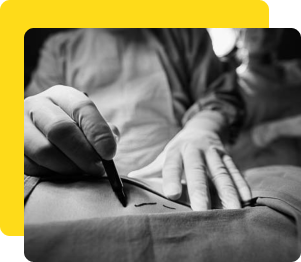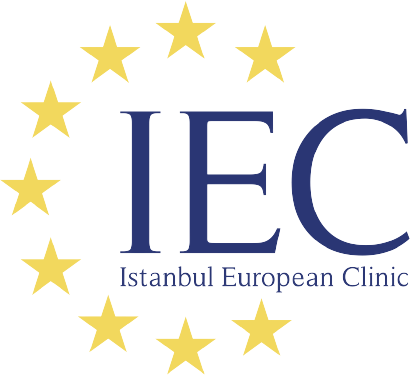Plastic Surgery
Whether you’re looking to enhance your appearance or correct physical deformities, plastic surgery offers a range of procedures to help you achieve your desired results. However, before undergoing plastic surgery, it’s important to understand the process, risks, and costs involved. Plastic surgery cost can vary depending on the type of procedure and the surgeon’s experience and reputation. In addition, finding the right plastic surgery clinic is crucial to achieving the best results. With many types of plastic surgery available, such as breast augmentation, liposuction, and facelifts, choosing the right one for you can be overwhelming. Our guide provides valuable information on plastic surgery types, costs, and clinics to help you make an informed decision.
Procedure: Plastic Surgery
Duration: 1 – 2 hours
Length of Stay in Hospital : 1 – 4 nights (Depends on Treatment)
Cost in Turkey: €3500 – €6850
Anesthesia: General anesthesia
Success Rate: 80% – 90% s
Final Results: After 12 months
Scars: Invisible
Pain: Slight
What’s Plastic Surgery?
Plastic surgery is a medical specialty that deals with reconstructing, restoring, or altering the body’s form and function.There are many plastic surgery types, ranging from cosmetic procedures like breast augmentation to reconstructive surgeries.While plastic surgery costs concern some, safety and quality should be the top priority.Reputable surgeons provide transparent plastic surgery prices and work with patients to develop a treatment plan that fits their needs and budget.Ultimately, cosmetic surgery can be a life-changing experience that improves a patient’s appearance and quality of life.

Why Do Patients Seek Plastic Surgery?
Patients seek cosmetic surgery for a variety of reasons. Here are some of the most common:
- Cosmetic reasons: Many patients seek cosmetic surgery to improve their appearance and boost their self-confidence. They may feel self-conscious about a physical feature, such as a crooked nose, small breasts, or excess fat, and want to enhance their appearance.
- Reconstructive reasons: Some patients seek cosmetic surgery to restore their appearance or function after an injury, illness, or birth defect. For example, a patient who has undergone a mastectomy may seek breast reconstruction surgery, or a patient with a cleft lip may seek cosmetic surgery for the face.
- Health reasons: In some cases, cosmetic surgery can be medically necessary to improve a patient’s health. For example, a patient with large breasts may experience back pain and discomfort; breast reduction surgery can alleviate these symptoms. Patients with excess skin after weight loss may also seek cosmetic surgery to remove the skin and improve their overall health.
Overall, patients seek cosmetic surgery for various reasons, and it’s important to consult with a reputable plastic surgery clinic to determine which type of cosmetic surgery is right for each patient.
Types of Plastic Surgery
Cosmetic surgery encompasses various procedures that can enhance and reshape various body parts.
Here are some of the most common types of cosmetic surgery and their associated benefits:
- Plastic surgery for face: This type of cosmetic surgery includes procedures like facelifts, brow lifts, and eyelid surgery. These procedures can help to reduce the signs of aging, such as wrinkles and sagging skin, and can restore a more youthful appearance to the face.
- Plastic surgery BBL: Brazilian Butt Lift (BBL) is a popular procedure that involves the removal of fat from one part of the body, such as the abdomen or thighs, and its transfer to the buttocks. This procedure can enhance the shape and size of the buttocks and create a more attractive, curvaceous silhouette.
- Plastic surgery tummy tuck: A tummy tuck, or abdominoplasty, is a surgical procedure that removes excess skin and fat from the abdomen and tightens the abdominal muscles. This procedure can improve the appearance of a protruding or sagging abdomen and create a more toned, streamlined midsection.
- Plastic surgery lips: Lip augmentation procedures, such as lip fillers or lip implants, can enhance the size and shape of the lips, creating a more attractive and youthful appearance. These procedures can also improve the symmetry and balance of the lips, creating a more harmonious facial aesthetic.
- Plastic surgery nose: Rhinoplasty, or nose surgery, can alter the shape and size of the nose to create a more balanced and proportionate facial appearance. This procedure can also correct structural issues, such as a deviated septum, that may interfere with breathing.
In summary, cosmetic surgery can improve physical characteristics and create a more aesthetically pleasing appearance. Patients should consult a qualified plastic surgeon to determine which procedure suits them.
Risks and Complications of Plastic Procedures
While cosmetic surgery can provide numerous benefits, it’s essential to understand that all surgeries come with some degree of risk.
Some of the most common risks and complications of plastic procedures include:
- Infection: Any surgery that involves incisions creates a risk of infection. While rare, infections can be severe and require additional treatment.
- Excessive bleeding: Some patients may experience excessive bleeding during and after surgery. This risk is more significant for patients who take blood-thinning medication or have a bleeding disorder.
- Scarring: While cosmetic surgery is intended to improve a patient’s appearance, there is always a risk of scarring, particularly for incision procedures.
- Nerve damage: cosmetic surgery procedures can result in nerve damage, which may cause numbness or tingling sensations in the treated area.
- Anesthesia complications: While rare, some patients may react adversely to anesthesia. This risk is higher for patients with pre-existing medical conditions or a history of adverse reactions to anesthesia.
It’s important to note that these risks and complications are relatively rare, and many patients undergo cosmetic surgery without experiencing any complications.
However, patients should discuss any potential risks with their surgeon before undergoing the procedure and follow all pre and post-operative instructions to minimize the risk of complications.
Most Popular Plastic Surgeries
Here are some of the most popular plastic surgeries:
- Breast augmentation involves enlarging the breasts using implants or fat transfer. It is popular among women who desire fuller, more symmetrical breasts.
- Liposuction: This procedure involves removing excess fat from areas such as the abdomen, thighs, and arms. It is popular among both men and women who want to achieve a more toned and defined body.
- Rhinoplasty: Also known as a nose job, this procedure involves reshaping the nose to improve its appearance and function. It is popular among people who are unhappy with the size or shape of their nose.
- Facelift: This procedure involves lifting and tightening the skin on the face and neck to reduce the signs of aging. It is popular among both men and women who want to look more youthful and refreshed.
- Breast Reduction: Breast reduction, or reduction mammaplasty, is a surgical procedure that reduces the size of breasts by removing excess tissue, fat, and skin. It is typically done for women with large breasts that cause discomfort or distress. The surgery involves making incisions, removing tissue, and reshaping the breasts for a more proportional size and shape.
Overall, these popular plastic surgeries can help patients achieve the appearance they desire and boost their self-confidence. It is important for patients to consult with a qualified and experienced plastic surgeon to determine which procedure is right for them.
What Are The Criteria To Be Eligible For Plastic Surgery?
Before undergoing any cosmetic surgery procedure, meeting specific criteria to ensure a safe and successful outcome is crucial.
Here are some of the conditions to be eligible for plastic surgery:
- Good overall health: The patient must be in good health, both physically and mentally, with no underlying medical conditions that can increase the risk of complications during or after surgery.
- Realistic expectations: Patients must clearly understand the results they can achieve with cosmetic surgery and have reasonable expectations.
- Non-smoker: Smoking can impair healing and increase the risk of complications, so patients must avoid smoking for a specific period before and after surgery.
- Stable weight: Patients must maintain a stable weight for at least six months before surgery to ensure long-lasting results.
- No ongoing medication: Patients must not be taking any medication that can affect the outcome of surgery or interfere with the healing process.
- No active infections: Patients must be free from any active infections or medical conditions that can compromise their safety during surgery.
Meeting these criteria ensures that patients are in good health and have realistic expectations, which are essential for a safe and successful cosmetic surgery procedure.
How To Find the Right Surgeon
Finding the right plastic surgeon is essential to ensure a successful outcome. Here are some tips to help you find the right surgeon:
- Research: Do your research and look for board-certified plastic surgeons with experience in the specific procedure you want.
- Referrals: Ask for referrals from family, friends, or healthcare professionals.
- Credentials: Check the surgeon’s credentials and ensure they are certified by a recognized medical board.
- Consultation: Schedule a consultation with the surgeon to discuss your goals and ask any questions you may have.
- Reviews: Read reviews and testimonials from previous patients to understand the surgeon’s track record and patient satisfaction.
Preparing for Plastic Surgery
Preparing for cosmetic surgery is crucial to ensure a safe and successful outcome. Here are some things to keep in mind:
- Before the surgery, follow your surgeon’s instructions regarding medications, supplements, and lifestyle changes.
- Arrange for someone to drive you to and from the surgery and stay with you for the first few days after the surgery.
- Prepare your home with ice packs, comfortable clothing, and pillows to aid your recovery.
- Stock up on any necessary medications and supplies.
Recovery and Aftercare (Do & Don’t Post-Procedure)
The recovery process after cosmetic surgery can vary depending on the procedure. However, there are some general do’s and don’ts to keep in mind:
Do:
- Follow your surgeon’s post-operative instructions regarding medications, wound care, and activity restrictions.
- Get plenty of rest and sleep.
- Eat a healthy and balanced diet.
- Stay hydrated.
Don’t:
- Smoke or use nicotine products as they can interfere with the healing process.
- Engage in strenuous physical activity or lift heavy objects until cleared by your surgeon.
- Expose incision sites to direct sunlight.
Conclusion
Cosmetic surgery can be a life-changing experience for patients, whether it’s to enhance their appearance or improve their quality of life.
However, it’s essential to research, find the right surgeon, and prepare adequately for the procedure to ensure a safe and successful outcome.
Before booking cosmetic surgery, learn more about the types of procedures involved in plastic surgery.
By following the guidelines outlined in this article, you can decide whether cosmetic surgery is right for you.
Frequently Asked Questions (FAQs)
There are non-surgical alternatives such as Botox, dermal fillers, and laser skin resurfacing that can provide similar results to some cosmetic surgery procedures.
Every cosmetic surgery procedure carries risks and potential complications. However, some less invasive procedures, such as Botox and dermal fillers, are generally considered safe.
The hardest part of cosmetic surgery may vary depending on the individual and the procedure. However, the recovery period can be challenging for some patients.
Breast augmentation is one of the most common cosmetic surgery procedures among women.
Recovery from extensive procedures such as body contouring surgeries, including tummy tucks and Brazilian Butt Lifts (BBLs), can be more challenging than other plastic surgery procedures.
